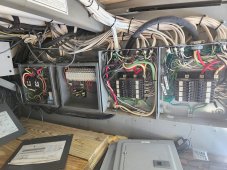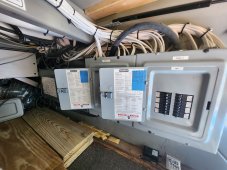UPS function is a timing and sensitivity thing. It seeks to prevent a potential issue. It just changes the threshold of where the inverter takes over from the incoming power.
Disabling it will not cause loss of power. When I shut my generator off, the inverter takes over, and I see nothing more than a slight blip as the. The important part is that while I'm mucking with things, my wife's experience in the trailer is completely unaffected.
I don't follow your numbers at all.
Power assist works based on the AC input limit. If set to 20A, that's when power assist triggers. The factor determines how much of the deficiency is borne by the inverter vs. AC input.
2.0 means if the inverter anticipates a 1000W deficiency beyond 2400W (3400W total), it will supply 2000W of initial boost and then taper back to 1000W if the situation is stable, i.e., initially, the inverter is supplying 2000W, and shore is only supplying 1400W.
3.5 means if the inverter anticipates a 1000W deficiency, it will supply 3400W of initial boost unloading the AC input completely, and then taper back to 1000W if the situation is stable.
Higher numbers mean you use less of the AC input and put more strain on the inverter, i.e., it actually REDUCES your total power output for surges. The only reason you go above 2.0 is if the AC input is getting overloaded. If you want more total power, you actually want to approach 1.0.





